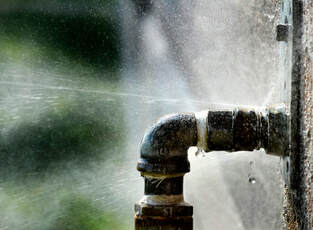Overview To Water Leakage Detection At Home
Overview To Water Leakage Detection At Home
Blog Article
We have unearthed this post pertaining to Leaking water lines below on the net and believe it made good sense to discuss it with you here.

Early discovery of leaking water lines can reduce a potential disaster. Some little water leakages may not be noticeable.
1. Check Out the Water Meter
Every home has a water meter. Inspecting it is a surefire way that aids you discover leakages. For starters, shut off all the water sources. Make certain no person will purge, use the faucet, shower, run the cleaning maker or dishwashing machine. From there, go to the meter and also watch if it will transform. Considering that no one is utilizing it, there ought to be no motions. If it relocates, that indicates a fast-moving leakage. If you detect no adjustments, wait an hour or two as well as check back once again. This means you might have a slow-moving leak that can even be below ground.
2. Inspect Water Intake
If you spot sudden modifications, in spite of your intake being the very same, it means that you have leaks in your plumbing system. A sudden spike in your expense indicates a fast-moving leak.
On the other hand, a consistent rise on a monthly basis, even with the same practices, shows you have a sluggish leak that's likewise gradually intensifying. Call a plumber to thoroughly check your home, particularly if you feel a warm area on your floor with piping beneath.
3. Do a Food Coloring Test
When it concerns water usage, 30% comes from toilets. Examination to see if they are running appropriately. Decrease specks of food shade in the container as well as wait 10 mins. There's a leakage in between the tank and dish if the color somehow infiltrates your dish during that time without flushing.
4. Asses Outside Lines
Don't fail to remember to examine your outside water lines also. Should water leak out of the link, you have a loosened rubber gasket. One small leak can throw away tons of water as well as surge your water expense.
5. Assess the circumstance and examine
Property owners ought to make it a practice to check under the sink counters and also also inside cupboards for any bad odor or mold and mildew growth. These 2 red flags suggest a leakage so prompt interest is called for. Doing routine assessments, also bi-annually, can conserve you from a significant problem.
Examine for stainings and also damaging as most pipelines and also devices have a life expectancy. If you think leaking water lines in your plumbing system, don't wait for it to escalate.
Early discovery of dripping water lines can minimize a possible calamity. Some small water leaks may not be noticeable. Inspecting it is a guaranteed method that helps you uncover leakages. One small leak can waste bunches of water and also surge your water bill.
If you suspect dripping water lines in your plumbing system, don't wait for it to escalate.
How to Know If Your Home Has a Hidden Leak
Water Meter Reveals Inexplicable Water Usage
If you’d like to test whether or not there’s a leak somewhere in your home, you can do this using your water meter. Here is how to conduct the test:
Don’t use any water in your home for at least 30 minutes; this also means not turning on faucets or water-using appliances.
Go outside, and check your water meter for activity.
If your water meter shows that there was activity, even though no one was using any water, this proves that there is a leak in your home.
Visible Mold or Mildew Growth
Leaks behind walls create moist, dark environments that allow mold and mildew to grow and thrive. Eventually, you might see mold growth forming on the wall closest to a hidden leak.
If mold is growing in an area that receives a high amount of moisture, such as a bathroom, it may simply be an indication that better ventilation is needed. However, if you see mold growth on a wall or the ceiling in an area where you would not expect, you probably have a hidden leak.
Musty, Mildew Odor
Sometimes you might not be able to see the mold or mildew that is growing as a result of a leak. However, the smell can give the problem away just as easily. If you catch a whiff of something musty, there’s a good chance that old water is collecting somewhere in your home that you can’t see.
Stained/Warped Walls, Ceilings, or Floors
When your home soaks up water, a variety of red flags can become visible, including ceiling stains, bubbling drywall, warped walls, and sagging floors. While these issues can be caused by excess humidity, they can also be signs that a pipe or plumbing connection has started leaking behind your walls.
Inexplicably High Water Bill
After a while, you get a general sense for what your water bill should be. If you own a pool or sprinkler system, your bill will tend to be higher during summer. However, if you receive a water bill that seems especially high, and you can’t figure out what caused it, then you may have a hidden leak somewhere that’s increasing your bill.
https://www.plumbingjoint.com/blog/2019/july/how-to-know-if-your-home-has-a-hidden-leak/

Hopefully you liked our part on Finding hidden leaks. Many thanks for spending some time to read our posting. Do you know about somebody else who is interested in Finding hidden leaks? Feel free to promote it. I thank you for reading our article about Detecting hidden plumbing leaks.
Report this page